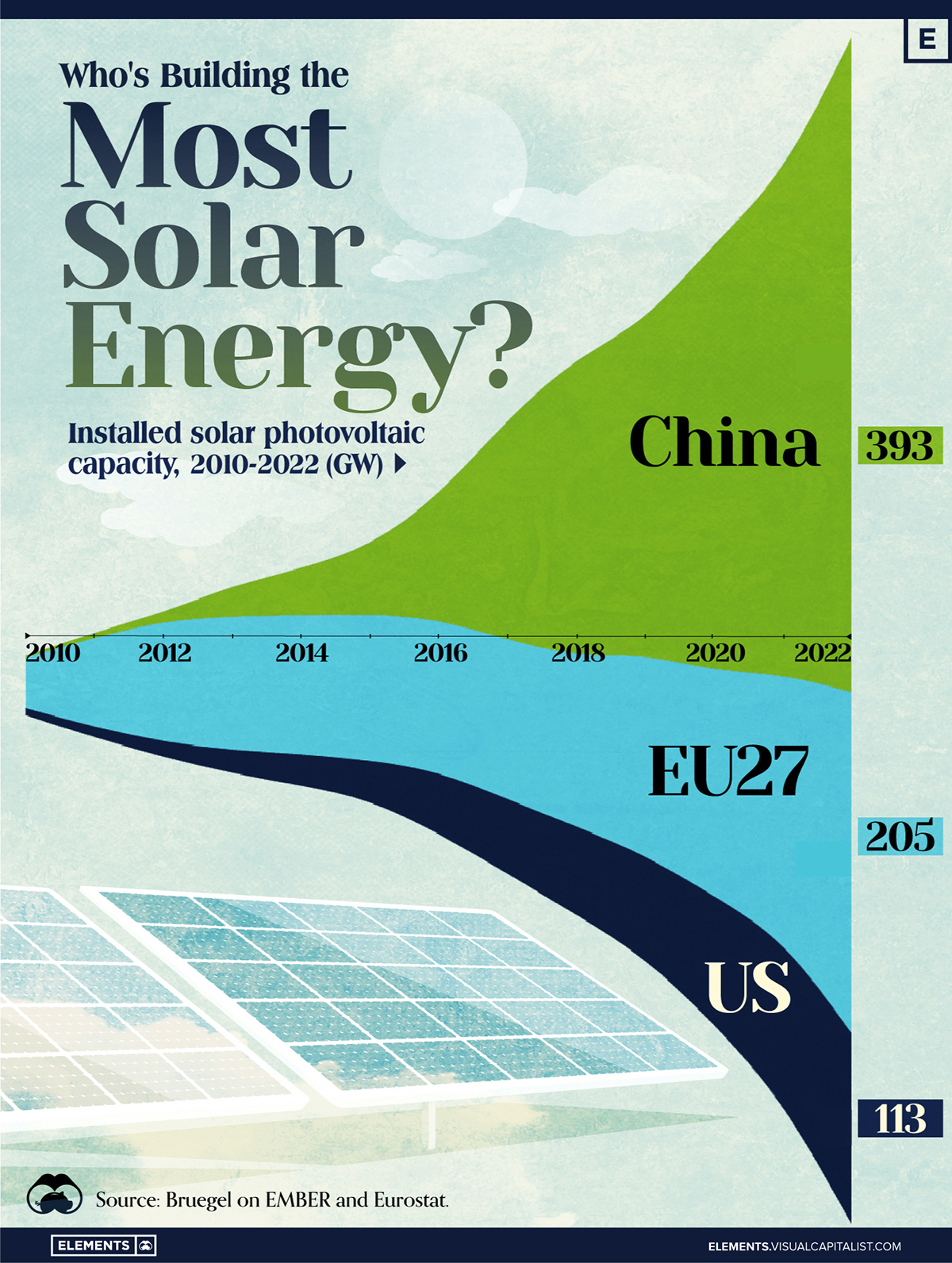Energy
What Electricity Sources Power the World?
![]() Subscribe to the Elements free mailing list for more like this
Subscribe to the Elements free mailing list for more like this
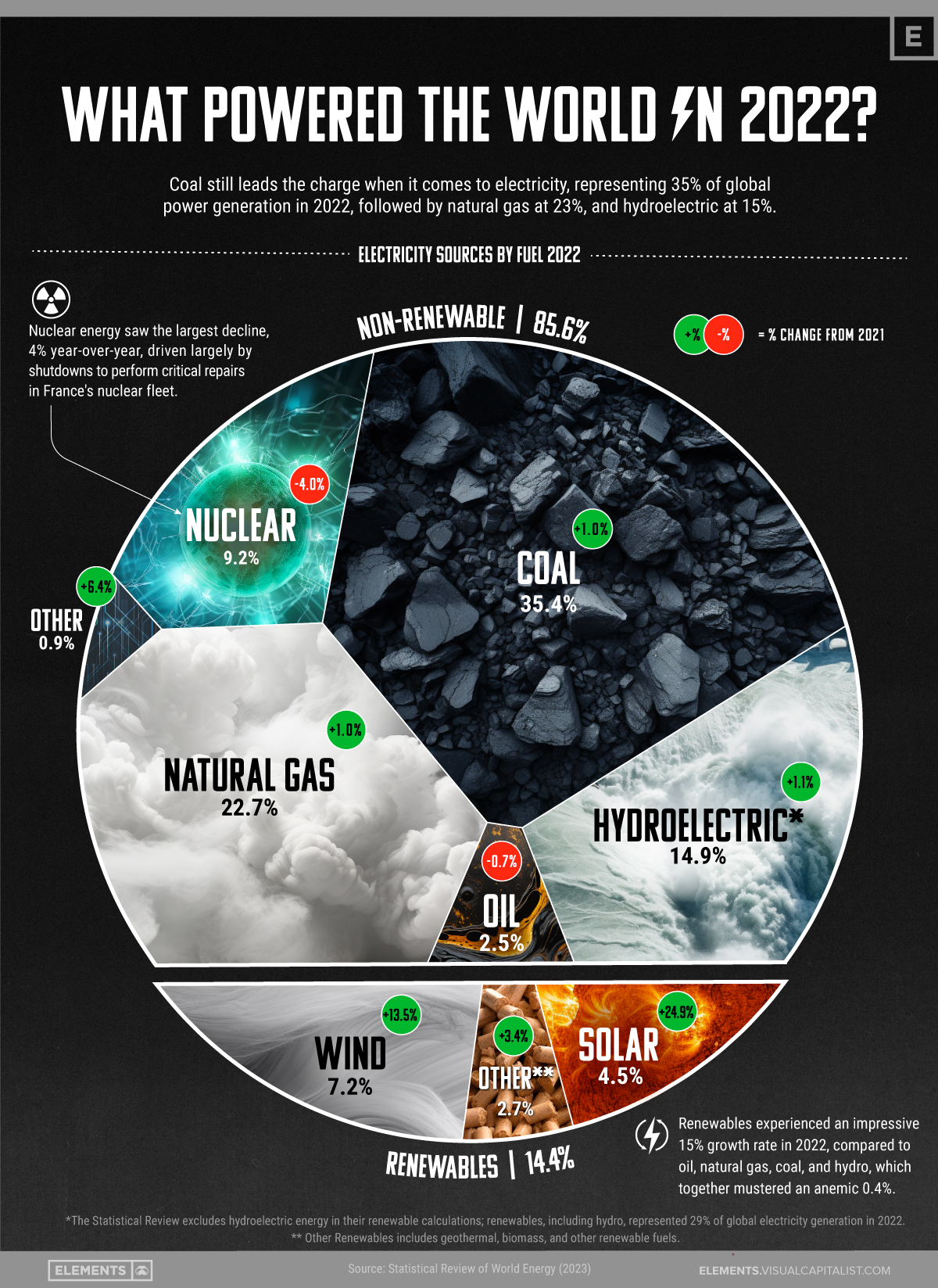
What Powered the World in 2022?
This was originally posted on Elements. Sign up to the free mailing list to get beautiful visualizations on real assets and resource megatrends each week.
In 2022, 29,165.2 terawatt hours (TWh) of electricity was generated around the world, an increase of 2.3% from the previous year.
In this visualization, we look at data from the latest Statistical Review of World Energy, and ask what powered the world in 2022.
Coal is Still King
Coal still leads the charge when it comes to electricity, representing 35.4% of global power generation in 2022, followed by natural gas at 22.7%, and hydroelectric at 14.9%.
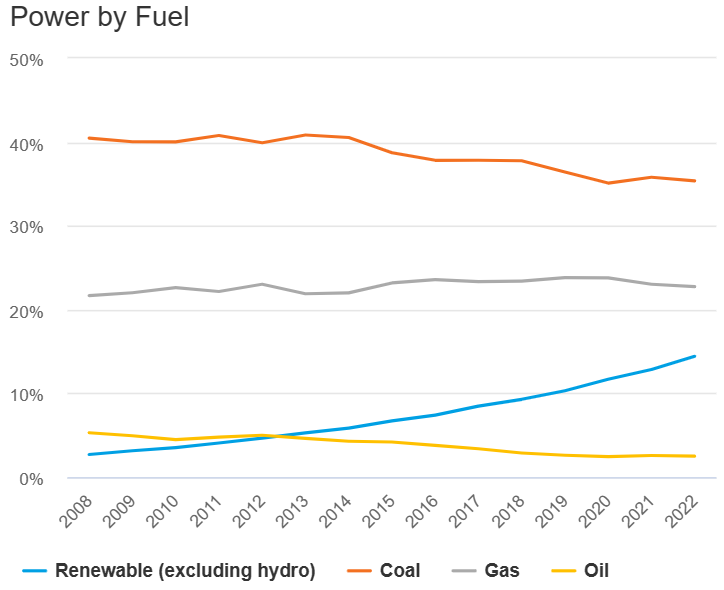
Source: Energy Institute
Over three-quarters of the world’s total coal-generated electricity is consumed in just three countries. China is the top user of coal, making up 53.3% of global coal demand, followed by India at 13.6%, and the U.S. at 8.9%.
Burning coal—for electricity, as well as metallurgy and cement production—is the world’s single largest source of CO2 emissions. Nevertheless, its use in electricity generation has actually grown 91.2% since 1997, the year when the first global climate agreement was signed in Kyoto, Japan.
Renewables on the Rise
However, even as non-renewables enjoy their time in the sun, their days could be numbered.
In 2022, renewables, such as wind, solar, and geothermal, represented 14.4% of total electricity generation with an extraordinary annual growth rate of 14.7%, driven by big gains in solar and wind. Non-renewables, by contrast, only managed an anemic 0.4%.
The authors of the Statistical Review do not include hydroelectric in their renewable calculations, even though many others, including the International Energy Agency, consider it a “well-established renewable power technology.”
With hydroelectric moved into the renewable column, together they accounted for over 29.3% of all electricity generated in 2022, with an annual growth rate of 7.4%.
France’s Nuclear Horrible Year
Another big mover in this year’s report was nuclear energy.
In addition to disruptions at the Zaporizhzhia nuclear power plant in Ukraine, shutdowns in France’s nuclear fleet to address corrosion found in the safety injection systems of four reactors led to a 4% drop in global use, year-over-year.
The amount of electricity generated by nuclear energy in that country dropped 22% to 294.7 TWh in 2022. As a result, France went from being the world’s biggest exporter of electricity, to a net importer.
Powering the Future
Turning mechanical energy into electrical energy is a relatively straightforward process. Modern power plants are engineering marvels, to be sure, but they still work on the same principle as the very first generator invented by Michael Faraday in 1831.
But how you get the mechanical energy is where things get complicated: coal powered the first industrial revolution, but heated the planet in the process; wind is free and clean, but is unreliable; and nuclear fission reliably generates emission-free electricity, but also creates radioactive waste.
With temperature records being set around the world in the summer, resolving these tensions isn’t just academic and next year’s report could be a crucial test of the world’s commitment to a clean energy future.
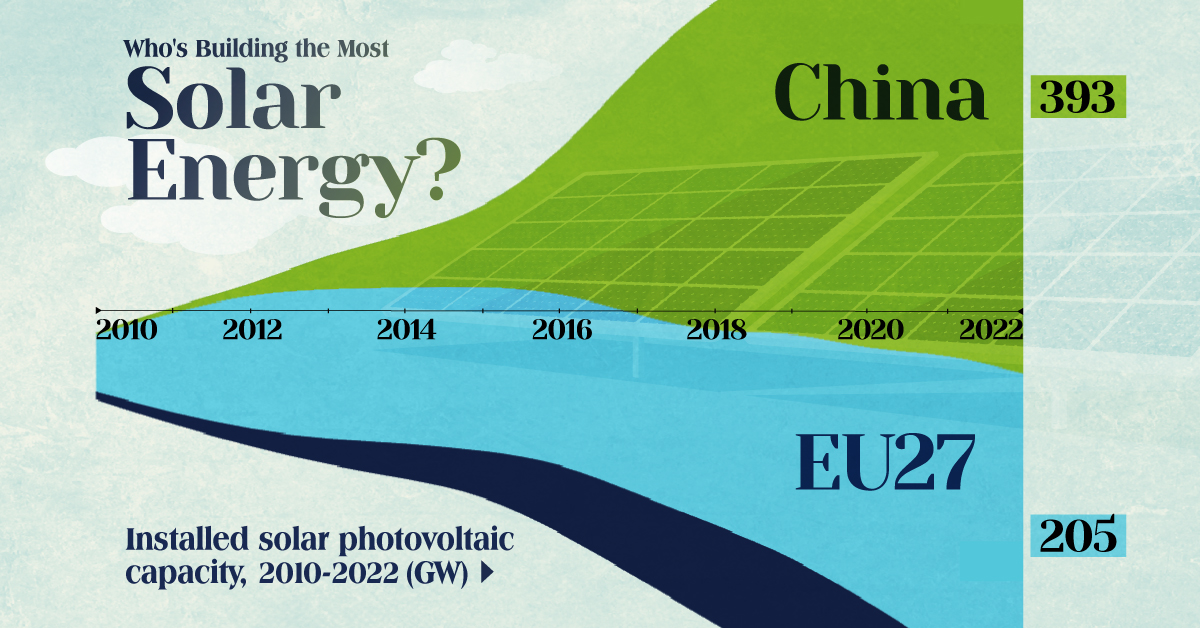
Who’s Building the Most Solar Energy?
This was originally posted on our Voronoi app. Download the app for free on iOS or Android and discover incredible data-driven charts from a variety of trusted sources.
In 2023, solar energy accounted for three-quarters of renewable capacity additions worldwide. Most of this growth occurred in Asia, the EU, and the U.S., continuing a trend observed over the past decade.
In this graphic, we illustrate the rise in installed solar photovoltaic (PV) capacity in China, the EU, and the U.S. between 2010 and 2022, measured in gigawatts (GW). Bruegel compiled the data..
Chinese Dominance
As of 2022, China’s total installed capacity stands at 393 GW, nearly double that of the EU’s 205 GW and surpassing the USA’s total of 113 GW by more than threefold in absolute terms.
| Installed solar capacity (GW) | China | EU27 | U.S. |
|---|---|---|---|
| 2022 | 393.0 | 205.5 | 113.0 |
| 2021 | 307.0 | 162.7 | 95.4 |
| 2020 | 254.0 | 136.9 | 76.4 |
| 2019 | 205.0 | 120.1 | 61.6 |
| 2018 | 175.3 | 104.0 | 52.0 |
| 2017 | 130.8 | 96.2 | 43.8 |
| 2016 | 77.8 | 91.5 | 35.4 |
| 2015 | 43.6 | 87.7 | 24.2 |
| 2014 | 28.4 | 83.6 | 18.1 |
| 2013 | 17.8 | 79.7 | 13.3 |
| 2012 | 6.7 | 71.1 | 8.6 |
| 2011 | 3.1 | 53.3 | 5.6 |
| 2010 | 1.0 | 30.6 | 3.4 |
Since 2017, China has shown a compound annual growth rate (CAGR) of approximately 25% in installed PV capacity, while the USA has seen a CAGR of 21%, and the EU of 16%.
Additionally, China dominates the production of solar power components, currently controlling around 80% of the world’s solar panel supply chain.
In 2022, China’s solar industry employed 2.76 million individuals, with manufacturing roles representing approximately 1.8 million and the remaining 918,000 jobs in construction, installation, and operations and maintenance.
The EU industry employed 648,000 individuals, while the U.S. reached 264,000 jobs.
According to the IEA, China accounts for almost 60% of new renewable capacity expected to become operational globally by 2028.
Despite the phasing out of national subsidies in 2020 and 2021, deployment of solar PV in China is accelerating. The country is expected to reach its national 2030 target for wind and solar PV installations in 2024, six years ahead of schedule.
-

 Public Opinion6 days ago
Public Opinion6 days agoCharted: How Americans Feel About Federal Government Agencies
-

 Healthcare2 weeks ago
Healthcare2 weeks agoWhat Causes Preventable Child Deaths?
-
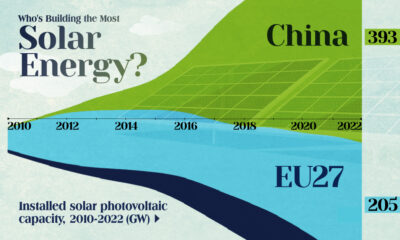
 Energy2 weeks ago
Energy2 weeks agoWho’s Building the Most Solar Energy?
-

 Markets2 weeks ago
Markets2 weeks agoMapped: The Most Valuable Company in Each Southeast Asian Country
-
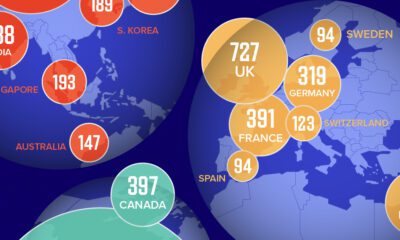
 Technology1 week ago
Technology1 week agoMapped: The Number of AI Startups By Country
-

 Healthcare1 week ago
Healthcare1 week agoLife Expectancy by Region (1950-2050F)
-
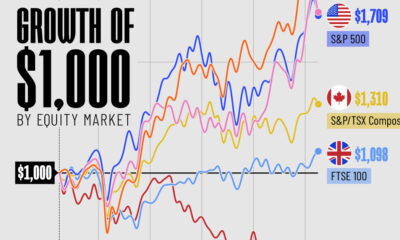
 Markets1 week ago
Markets1 week agoThe Growth of a $1,000 Equity Investment, by Stock Market
-
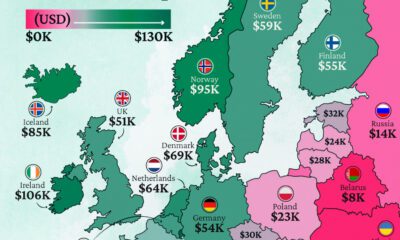
 Markets1 week ago
Markets1 week agoMapped: Europe’s GDP Per Capita, by Country

 Can I share this graphic?
Can I share this graphic? When do I need a license?
When do I need a license? Interested in this piece?
Interested in this piece?







